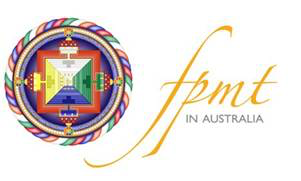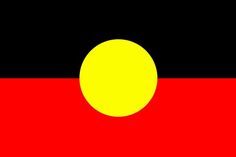

We have updated our range of films that inspire, inform and entertain: all with a Buddhist theme.
‘We think the Buddha would have liked movies. Since he often taught through stories and parables, he would have appreciated the powerful spiritual stories that great films tell.’
The Lion’s Roar
Directed by Malati Rao, this film traces the journey of Tibetan Buddhist nuns, who have, for centuries, sought equality within their ancient faith. Empowered by His Holiness the Dalai Lama, they now receive the highest monastic degree – the Geshe Ma or PhD degree. The film celebrates and documents this powerful journey.
Australian ex-Catholic, ex-political activist and feminist, Venerable Robina Courtin has been a Buddhist nun since 1978. Teaching Buddhism around the world, she shatters the stereotype of a Buddhist nun, her intense and direct style leaving an indelible impression on everyone she meets.
This beautifully shot short film includes insightful interviews with a western Tibetan Buddhist monk as well as Tibetan Buddhist teachers. It explores the significance of Bodhgaya to the historical Buddha, Siddhartha’s life.
This gorgeous short film tells the story of 9 year old Urgan who lives in a village in the northern Himalayas, 3,800 meters above sea level. The Buddhist tradition wants him to leave his family to join his monastery. To do so, he will have to cross the Wori La pass, located at more than 5,000 meters above sea level. Accompanied by his cousin, he travels for several days on an initiatory path marked by funny situations, unexpected, spiritual, disturbing or fascinating encounters: a path to enlightenment.
Acclaimed director, Werner Herzog, documents the two Kalachakra initiations of 2002, presided over by the fourteenth Dalai Lama. The first, in Bodhgaya India, was disrupted by the Dalai Lama’s illness. Later that same year, the event was held again, this time without disruption, in Graz, Austria. The film’s first location is the Bodhgaya, the site of the Mahabodhi Temple and the Bodhi tree. Herzog then turns to the pilgrimage at Mount Kailash, after which the film then focuses on the second gathering in Graz.
The Drukpa Kung-Fu nuns of Nepal lead an extraordinary life as women who have chosen a monastic life. The Gyalwang Drukpa, a tireless advocate for women’s equality, has given them an unparalleled education that includes life outside the monastic protocol.
This film looks at the unique Tibetan Buddhist culture of Zanskar and how the local people are dealing with change following road construction into their once isolated valley. We end up at one of the most stunning Monasteries on the Zanskar river, Phuktal Monastary.
TULKU – Enlightened Tibetan masters return as recognized “tulkus” — reincarnated buddhas. In the 1970s, tulkus began to be born in the West, confusing both the Tibetan system and the lives of the Western children involved. This fascinating film takes an honest view of how the system has worked for an American ‘tulku’ – his difficulties, feelings and experiences told candidly
This film features stunning footage of the Himalayas featuring the world’s tallest mountains in Nepal, Pakistan, Tibet, Bhutan, & India. From the jagged peaks of Pakistan, to the mighty mountains of Nepal, the Himalayas will leave you in endless awe with their majesty. The premise of the film is similar to ‘Slow Travels’ where the viewer has time to take in the beautiful scenery to calming music. Relaxing and beautiful.
THE DAKINI CODE is the third film in Laurence Brahm’s Lotus-Born Master series. His earlier works SEARCHING FOR THE LOTUS-BORN MASTER (2018) and RETURN OF THE LOTUS-BORN MASTER (2019) have won multiple international film festival awards and can be found near the bottom of this page. Film-maker, Laurence Brahm, believes that Guru Padmasambhava (Guru Rinpoche) was an important historical figure who embraced many different cultures across the Himalayan region while merging philosophy with science.
Renowned as a great meditator, guru, poet, scholar and as one of the main teachers of the Dalai Lama, the Nyingma Lama Dilgo Khyentse Rinpoche died in 1991. Narration by Richard Gere with music by Philip Glass.
Dzongsar Khyentse Norbu may be one of the world’s most eminent Buddhist teachers, but it’s a job description he slyly rejects at every turn. Appearances by Bernardo Bertolucci and Steven Seagal, filmed in the UK, Bhutan, Canada, the US, and in Germany at the World Cup.
The incredible footage of Out of This World taken in 1949, offers rare glimpses of His Holiness the 14th Dalai Lama, the Potala palace and the unique culture and landscape of Tibet. Journey into Tibet with Lowell Thomas and Lowell Thomas Jr. as it was in 1949 before Chinese occupation. Lowell Thomas also wrote the book called Out of This World which is still available today. This film was published by the Library of Tibetan Works and Archives .
The historical BBC documentary, The Roaring Silence contains early footage of Kopan monastery and interviews with the first FPMT Western monks and nuns. In 1973 the BBC visited Nepal to film a documentary about Buddhism, which produced outstanding footage of this early era. The documentary includes a visit to Kopan Monastery not long after it was established and, while there, interviews with early Western students including Anila Ann McNeil, Marie Obst (Yeshe Khadro), Harry Luke, Nick Ribush and David (whose last name is forgotten in the mists of time). The video includes footage of Swayambhunath and Boudhanath in Kathmandu, a long trek to Tengboche and concludes with the arrival there of Trulshik Rinpoche by helicopter.
Karma tells the tale of a nun’s search for repayment of a debt, which will be used to pay for traditional prayers for her Abbess, who has just died. The nun fulfils a debt owed by the abbess to a young nun previously under her care, who ran away from the abbess’s harsh discipline, and was lost to an unhappy life of vice. The nun recognizes that the abbess’s true intent was to save her from the glittering yet empty world of samsara, and after learning of the tragic outcomes of women who’d run away looking for love, or an escape from their families, develops true renunciation with the determination to devote her life to Buddhist practice.
Shrouded in myth and mystery, the Lotus-Born Master, Padmasambhava (Guru Rinpoche in Tibetan) is recognized as the founder of Vajrayana or Tibetan Buddhism. In 2018, a documentary expedition team followed the historic journey of Padmasambhava, who lived in the Himalayas during the Eighth Century. The expedition followed his historic journey covering over 20,000 kilometres under extreme conditions, scaling the snow mountains he crossed, finding the sacred lakes where he performed magic, exploring the caves where he engaged in tantric meditation.
Return of the Lotus-Born Master filmed in 2019, is a sequel to the international award winning documentary film Searching for the Lotus-Born Master. Director Laurence Brahm leads an expedition team into the ‘hidden realms’ of the Himalayan Kingdom of Bhutan, searching for secret teachings concealed by the Lotus-Born Master during the Eighth Century. These secret teachings that can only be downloaded from parallel universes with the help of divine consorts (dakinis). These teachings can help future generations at a time when our planet is suffering from self-destruction due to short-sighted greed and aggression.
Lama Lhundrup came to Kopan monastery in 1973 upon the request of FPMT founder Lama Yeshe, who wrote to Lama Lhundrup simply, ‘I have some monks, can you teach them? If so, please come.’ Khensur Rinpoche Lama Lhundrup Rigsel tirelessly offered his service to accomplishing the wishes of Lama Yeshe and Lama Zopa Rinpoche for almost 40 years at Kopan Monastery in Nepal. Lama Lhundrup touched the lives of thousands of students, taking care of the monks and nuns of Kopan as well as international Dharma students. He stepped down as abbot of Kopan Monastery in July 2011 due to advanced stomach cancer, a diagnosis he received in January 2011.
On September 7, 2011 at 11:10 p.m., after a lifetime of Dharma study, practice and selfless service to countless sentient beings, Lama Lhundrup stopped breathing and passed into clear light meditation. This short video was shot at the cremation day and the uncovering of his holy relics in the ashes.
Read more about Lama’s Lhundrup’s death process.
FPMT in Australia acknowledges the Traditional Custodians of the lands upon which we work and live. We pay our respects to Elders, past, present and future, as well as all Aboriginal and Torres Strait Islander peoples – their Country, Culture, and Community.


1. Following us on Instagram
2. Following us on Facebook
3. Subscribing to our YouTube channel
Thank you so much!
© 2024 Created by FPMTA Communications with Seedprod